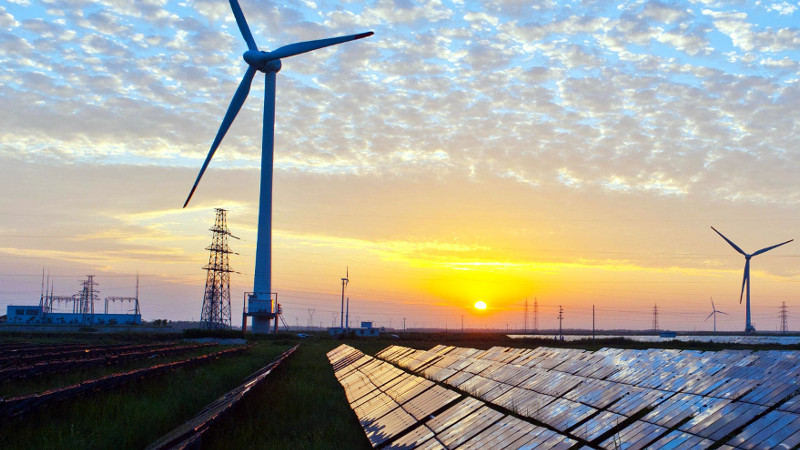Wind turbines or solar panels with batteries will be able to provide on-demand power cheaper than old coal plants in China by 2028, analysts at Bloomberg New Energy Finance (BNEF) predict.
In the US, the combo can outcompete gas generation by 2027, according to the same New Energy Outlook report, presented in London on Friday.
BNEF expects battery prices, which are already down by 79% per megawatt-hour since 2010, to continue falling fast. That will enable grids to integrate more variable renewables and ultimately end reliance on coal, gas, and nuclear to meet peak demand.
By 2050, the report predicts 71% of electricity worldwide will be generated by carbon-neutral sources, with 50% coming from renewables.
“The arrival of cheap battery storage will mean that it becomes increasingly possible to finesse the delivery of electricity from wind and solar, so that these technologies can help meet demand even when the wind isn’t blowing and the sun isn’t shining,” lead author Seb Henbest said at the launch.
Rechargeable, high-energy density lithium-ion batteries are the main focus of this analysis. There are several different types of lithium battery on the market with varying lifetimes. They are used to store excess energy from solar panels and wind turbines and release it when needed.

David Howey, an engineering science professor at Oxford University, told Climate Home News lithium-ion technology is going to be “with us for at least ten years, possibly even beyond.”
“The growth we’re seeing at the moment is spectacular,” Howey said. “But there’s a long way to go and we have to be honest about that. It’s really difficult to predict what’s going to happen in 2050.”
Supplies of raw materials are critical, he added, and the sector needs to plan for end-of-life recycling. A typical on-grid battery lasts around ten years, charging and discharging three times a day.
One example of a commercial battery project went live on Friday: a three-megawatt hour storage system at the Johan Cruijff ArenA in Amsterdam. Second-life and new electric vehicle batteries will back up 4,200 solar panels on the arena’s roof, which developers said would provide stability to the Dutch grid as well as sustainable power for the stadium.
BNEF predicts Europe will lead the wind and solar power boom, with the sources predicted to make up 87% of the generation mix by 2050. The figure is tipped to reach 75% and 62% in India and China respectively. In this scenario coal shrinks to 11% of global electricity generation from 38% today.
It is a more bullish projection for clean energy than last year, but not yet in line with international climate goals. Even if coal were phased out globally by 2035, analysts warn it would not be enough to hold temperature rise below 2C, due to the level of gas generation expected to fill the gap.
